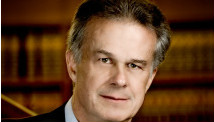STOCKHOLM, THE NETHERLANDS–(Marketwire – Jan 28, 2013) -
- newly created role will drive LBi’s global blend of creativity and technology
Global marketing and technology agency LBi has appointed Paolo Yuvienco as its Global Chief Technology Officer, with responsibility for developing and leading a unified technology strategy in key international territories.
The newly created role will see Yuvienco work alongside LBi’s global heads of Strategy, Creative, User Experience and Media to implement a group-wide strategy bringing together LBi’s creative innovation, technical expertise and IP toolset to deliver ground-breaking engagements for global clients including Cola-Cola, Johnson & Johnson and Sony Mobile.
Yuvienco joined LBi in 2004 and was appointed as Director of Technology three and a half years ago. He brings 16 years of technical implementation, architecture and strategic planning experience to the Global Chief Technology Officer role, having held senior positions at AT&T Labs, as well as being instrumental in a string of telecoms-focused start-ups.
Yuvienco will be based in LBi’s New York office and will report to Global Chief Executive Luke Taylor, who said: “We are particularly excited by the opportunity to converge bought, owned and earned media thinking and integrate creative innovation, new tools and IP into a better blended mix. I’m delighted that Paolo will be at the forefront of this evolution as we look to target more ambitious client engagements around the world.”
Paolo Yuvienco, Global Chief Technology Officer at LBi, added: “While technology has always been part of the DNA at LBi, this is the first time that it will be led from a global perspective. Being appointed Global Chief Technology Officer is fantastic opportunity for me to further develop the unique fusion of technology and creativity which differentiates LBi from its competitive set and ensures we are building business value for our clients.”
About LBi
LBi is a global marketing and technology agency, expert at blending strategic, creative, media and technical expertise to build business value. We help companies of all shapes and sizes decide what’s next for their business – and then we take them there. We define and execute transformational digital strategies for clients including BT, Coca-Cola E.ON, Lloyds TSB, Play.com and Virgin Atlantic. Across our 32 offices in 17 countries, there are more than 2,200 digital specialists collaborating with brands to enrich people’s lives via service design, branded content, mobile, CRM and social media. We also set the pace in digital display, search, affiliate marketing, usability and analytics. There are many things that make LBi unique, but if we had to choose one it would be our ability to bring together diverse teams of experts to suit any brief. We call this blending, and it’s the reason why all types of organisations – from famous global businesses to disruptive start-ups – choose LBi to help make their brands desirable wherever, whenever and however people choose to engage with them.
This announcement is distributed by Thomson Reuters on behalf of Thomson Reuters clients. The owner of this announcement warrants that: (i) the releases contained herein are protected by copyright and other applicable laws; and (ii) they are solely responsible for the content, accuracy and originality of the information contained therein.
Source: LBi International N.V. via Thomson Reuters ONE [HUG#1673647]
Marketwire News Archive – Yahoo! Finance
Title Post: LBi appoints Paolo Yuvienco as Global Chief Technology Officer
Url Post: http://www.news.fluser.com/lbi-appoints-paolo-yuvienco-as-global-chief-technology-officer/
Link To Post : LBi appoints Paolo Yuvienco as Global Chief Technology Officer
Rating:
100%
based on 99998 ratings.
5 user reviews.
Author:
Thanks for visiting the blog, If any criticism and suggestions please leave a comment


